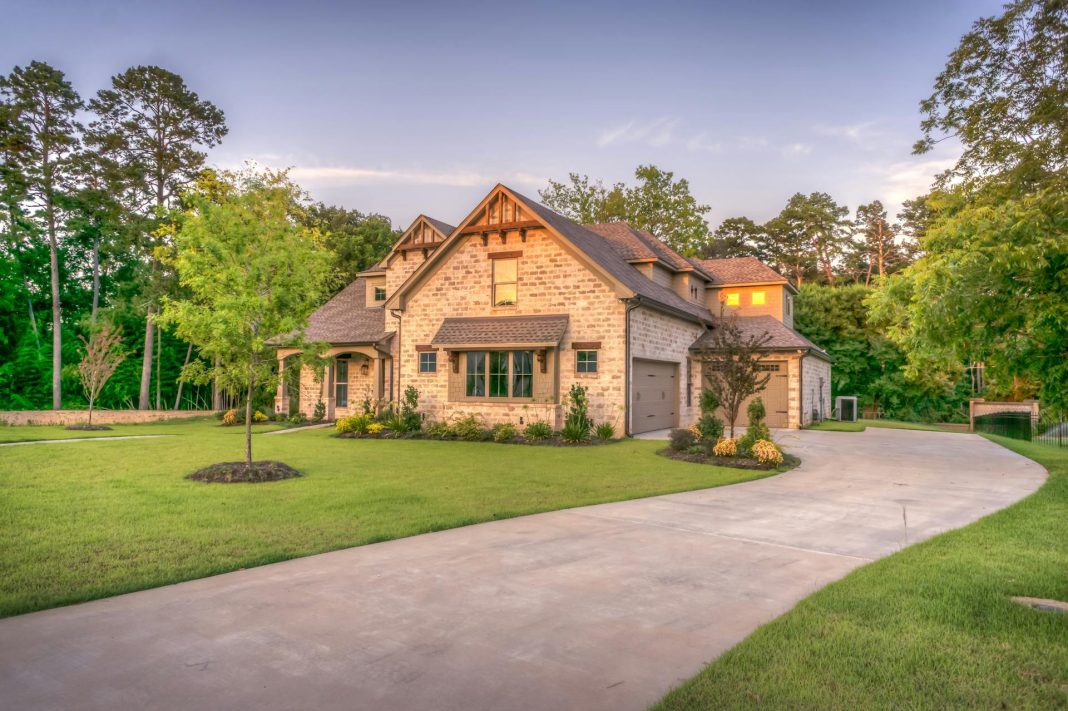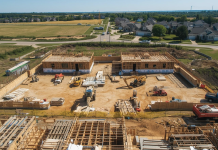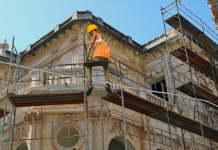While luxury homes shrink in size, their prices keep climbing.
The numbers tell a striking story: average new home size dropped from 2,314 square feet in Q4 2022 to 2,169 square feet in Q4 2024. Yet luxury property values continue climbing. The disconnect reveals a shift in what luxury buyers want—and smart builders can capitalize on it.
Five properties across North America and Australia show how design beats size in today’s luxury market.
The New Luxury Formula: Experience Over Expansion
Today’s affluent buyers aren’t just purchasing homes—they’re investing in experiences. Market data shows buyers prioritize quality and unique experiences over raw size, changing how builders should think about luxury projects.
This shift creates three opportunities:
- Themed designs that connect with buyers emotionally
- Amenities that match how people actually live
- Unique features that look great in photos and get people talking
Case Study: How Unique Features Command Premium Pricing
Literary Luxury in Columbus, Ohio
The “Book House” commands $1.6 million not for its size, but for 7,000 hardback books integrated into floor-to-ceiling architectural shelving. The design evokes a historic German village cottage while offering dual-unit rental potential—demonstrating how themed homes command 25-35% premiums through unique experiences.
Key Takeaway for Builders: Themes sell better than generic luxury.
Entertainment-First Design in Edmonton
A $4.19 million residence prioritizes entertainment infrastructure over bedroom count. Four bedrooms and eight bathrooms support extensive patio systems, spa rooms, and integrated theater spaces. The architectural emphasis on comfort and entertainment reflects buyers’ willingness to pay for spaces that match their lifestyle.
Key Takeaway for Builders: Entertainment spaces pay better than extra bedrooms.
Architectural Strategies That Drive Value
Flexible Design Appeals to Multiple Demographics
The Australian Coal Point property demonstrates flexible layouts. Open-plan living maximizes water views while maintaining privacy, simultaneously appealing to families, professionals, and retirees. More buyers want it, but it doesn’t cost more to build.
Architectural Heritage Meets Modern Functionality
Brad Pitt’s Los Feliz “Steel House” shows how authentic midcentury design holds value. Steel-and-glass construction, panoramic views, and terrazzo floors generate architectural significance beyond celebrity association. Recent media attention following a burglary attempt highlights how distinctive design elements maintain market interest over time.
Historical Character with Contemporary Systems
Toronto’s Arts and Crafts residence balances original character with modern functionality. Heated floors, chef’s kitchen design, and private outdoor space with integrated swim spa demonstrate how custom architectural elements like handcrafted woodwork and vaulted ceilings add exclusivity while serving practical needs.
Technical Implementation: What Construction Professionals Need to Know
Material Selection Drives Perceived Value
Strategic material choices create immediate visual impact. Marble, quartzite, and exotic hardwoods elevate aesthetic positioning beyond their functional benefits. The Steel House’s terrazzo floors demonstrate how material choices support overall architectural themes and create Instagram-worthy spaces that generate organic marketing.
Space-Maximizing Design Elements
Specific architectural features consistently add disproportionate value:
- Custom staircases create visual focal points while maximizing space efficiency
- Floor-to-ceiling windows expand perceived interior volume without increasing square footage
- Vaulted ceilings add dramatic height that photographs exceptionally well for marketing
- Integrated technology and wellness features represent standard expectations rather than luxury additions
Key Takeaways for Construction Professionals
The luxury real estate evolution creates specific opportunities for forward-thinking builders and developers:
- Prioritize experiential design over square footage expansion – buyers reward distinctive character more than additional space
- Integrate lifestyle-specific amenities early in planning – spa rooms, theater systems, and smart home automation justify premium pricing
- Focus on architectural uniqueness – themed elements like integrated shelving or authentic midcentury details drive value more effectively than standardized luxury markers
- Design for multiple demographics – flexible layouts expand buyer pools without increasing construction costs
- Choose materials strategically – visible luxury materials create immediate perceived value and social media appeal
Market Positioning Strategy
Each showcased property succeeds by creating specific lifestyle experiences rather than maximizing general luxury features. The Book House attracts literary enthusiasts, the Edmonton property appeals to entertainment-focused buyers, and the Steel House commands attention through architectural significance.
This specialization strategy allows construction professionals to:
- Target specific buyer segments with tailored messaging
- Command premium pricing through unique positioning
- Create properties that generate organic marketing through distinctive features
- Build portfolio differentiation in competitive luxury markets
The Future of Luxury Construction
The evidence is clear: luxury real estate success increasingly depends on architectural innovation and experiential design rather than scale. Properties that create emotional connections through distinctive character, lifestyle-specific amenities, and Instagram-worthy design elements consistently outperform larger but generic alternatives.
For construction professionals, this shift represents both challenge and opportunity. Those who master experiential design, understand evolving buyer priorities, and implement distinctive architectural elements will capture disproportionate market share in the premium residential segment.
The luxury market has evolved beyond size and location. Success now requires understanding how architectural innovation creates sustainable competitive advantages—and these five properties provide the blueprint for building that future.










